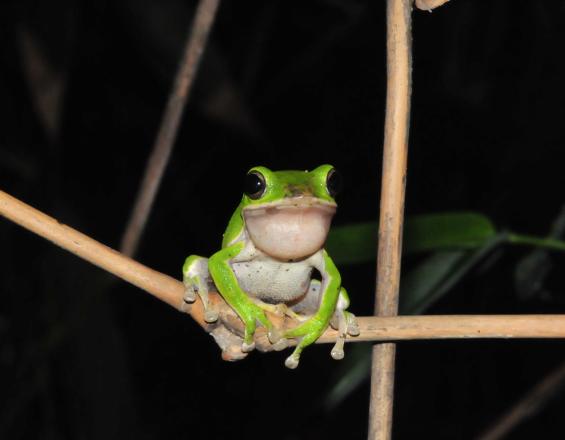
Resilience Assessment and Adaptive Collaborative Management of Shanglin Community’s Socio-Ecological Production Landscapes (Chiayi, Taiwan)

Shanglin community (Chiayi County, Taiwan) is a plain landscape with predominantly Han Chinese population. Bamboo shoot cultivation is the main production activity. The riparian zones of bamboo and secondary forests in the area are home to the endemic Farmland tree frog (Zhangixalus arvalis). It is listed as endangered on the IUCN Red List. In recent years, the decline of the bamboo shoot industry and changing land use patterns have led to its habitat loss and fragmentation.
In 2018, the Chiayi Branch of the Forestry and Nature Conservation Agency began promoting Farmland tree frog-friendly farming practices in Shanglin community. In 2021, resilience assessment workshops (RAWs) were used as a tool to better understand local challenges and align conservation and development priorities. RAWs results elicited the need to enhance biodiversity-based incomes and diversify marketing channels, effectively manage water quality and quantity, and strengthen the residents’ resilience to natural disasters.
Impacts
RAWs helped Shanglin community to gain a clearer perspective on the ways forward. To date, the community has been proactively collaborating with public and private sectors to address the above priorities.
- Shanglin locals have worked closely with the Chiayi Branch on promoting the "Farmland tree frog-friendly habitat label" for landscape conservation, using the Farmland tree frog as an umbrella species. This initiative has included habitat management (e.g., installing raptor perches, bamboo pruning, pesticide-free cultivation), designing healthy meals with bamboo shoots, and raising consumer awareness about the value of eco-friendly products.
- For effective water management, the community has successfully lobbied the Dalin Township Office to remove invasive species (e.g., water hyacinth) from local ponds, restoring their ecosystem functions and resilience. The water patrol team also uncovered illegal wastewater discharge by upstream egg factories. Following reports and protests, the factories were fined and ordered to make wastewater management adjustments.
The above efforts have enabled synergies between sustainable local livelihoods and habitat conservation, while RAWs became a starting point for the ongoing adaptive collaborative management and multi-stakeholder partnerships in Shanglin community.
